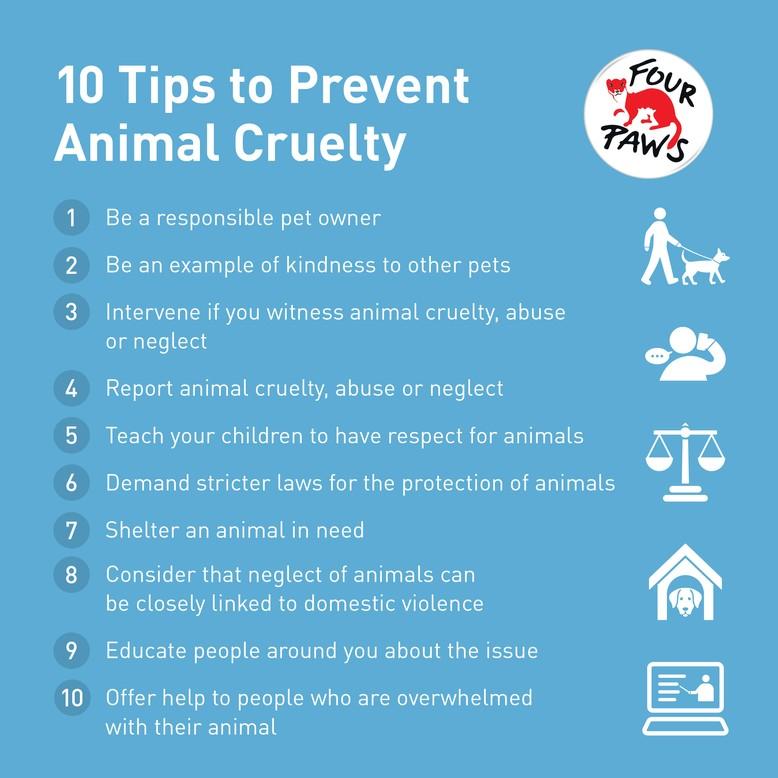In the intricate tapestry of our lives, pets occupy a uniquely cherished space; they are confidants, protectors, and sources of relentless companionship. However, this bond arrives with an obligation—an imperative to cultivate an environment devoid of cruelty. Before stepping out into the broader world, every pet owner must first engage the essential work of cruelty prevention at home. This starts with a resolute acknowledgment: the roots of compassion must be entrenched within our domestic spheres.
Understanding pet behavior is the cornerstone of humane treatment. A pet’s actions often reflect their environment and experiences, much as a flower blooms in conducive soil. Observing the nuances of feline prance or canine exuberance allows for a blossoming relationship predicated on trust and respect. Each animal is a unique being with individual needs and temperament; thus, insight into these elements is crucial for harmonious cohabitation. Awareness of behavior not only precludes potential frustrations but is a preventative measure against any inadvertent cruelty wrought by misunderstanding.
Creating a safe and nurturing environment is akin to building an impenetrable fortress against cruelty. This sanctuary must be a space where pets can thrive, free from physical and psychological barriers. Secure premises that prevent escape or injury are paramount. For instance, ensuring windows are secured, and balconies are properly enclosed is essential, particularly for curious cats who may regard heights as invitations for exploration. Each precaution taken is a blockade against potential harm, safeguarding the wellbeing of our animal counterparts.
Equally important is the importance of education. A dog or cat may not inherently understand the complexities of our world. Thus, fostering knowledge about proper care and ethical treatment is a fundamental responsibility. This can be achieved through various means—enrolling in training classes, participating in community workshops, or even consuming literature from reputable sources. It is vital to brush away any misconceptions regarding pet ownership. The pursuit of understanding transforms passive ownership into an active commitment to a pet’s welfare.
Moreover, responsible pet ownership extends beyond the physical realm—it encapsulates emotional intelligence as well. Animals are perceptive beings; they sense emotions within their environment. Creating an atmosphere conducive to positivity and stability resonates with the very core of cruelty prevention. Stress can lead to behavioral issues in pets, enkindling a cycle of miscommunication and frustration. Therefore, nurturing a calm, predictable home environment enhances the pet-owner dynamic and significantly mitigates the risk of cruelty stemming from exasperation or haste.
Socialization is yet another critical element in the prevention of cruelty. Allowing pets to interact with other animals and people fosters healthy behaviors and allays fears that can lead to aggressive tendencies. Regularly exposing pets to varied experiences contributes to well-adjusted companions, who are less prone to anxiety. Much like humans, pets benefit from exposure to diverse environments that challenge their perspectives, igniting curiosities and creating engaged social beings.
Acknowledging the signs of distress in pets is a crucial skill that often goes overlooked. A change in disposition or behavior can serve as a clarion call for attention. Whether it be excessive barking, violent reactions, or even withdrawal, understanding these symptoms is critical. Investing time in recognizing these signals ensures that any potential discomfort is swiftly addressed, thus preventing further escalation of stress or behavioral issues that may inadvertently lead to cruelty.
Dietary needs also feature prominently in the conversation about cruelty prevention. Feeding pets a nutritionally balanced diet is a fundamental pillar of responsible ownership. Neglecting dietary needs can lead to myriad health problems, spurring frustration and misunderstanding. Equipping oneself with knowledge about proper nutrition fosters an environment where pets are healthy and vibrant, thereby minimizing the risks associated with poor health management. Carefully selected nourishment creates not just physical health, but also emotional and psychological fortitude.
Additionally, regular veterinary care is indispensable. Ensuring pets receive appropriate medical attention—including vaccinations, preventive treatments, and routine check-ups—is part of a broader commitment to their welfare. Just as we insist upon our own health screenings, pets require vigilant observation by those who understand their unique health requirements. This not only counters potential suffering but also elevates the quality of life for our furry companions.
Finally, fostering a culture of empathy is essential in the journey toward preventing cruelty. Engaging family members, especially children, in discussions about the importance of kindness towards animals embeds a sense of responsibility from a young age. Such conversations cultivate a mindset that champions humane treatment and equips future generations to become stewards of compassion. When empathy becomes an inherent trait of a household, the roots of cruelty stand no chance of taking hold.
Preventing cruelty begins at home, but it radiates outward, influencing the community and, ultimately, society at large. Each small action—be it a more profound understanding of a pet’s behavior, a commitment to education, or the nurturing of a compassionate environment—acts as a thread woven into the broader fabric of humane treatment. As guardians of these sentient beings, the obligation to prevent cruelty is both a privilege and a solemn duty that enhances the lives of all creatures involved.








